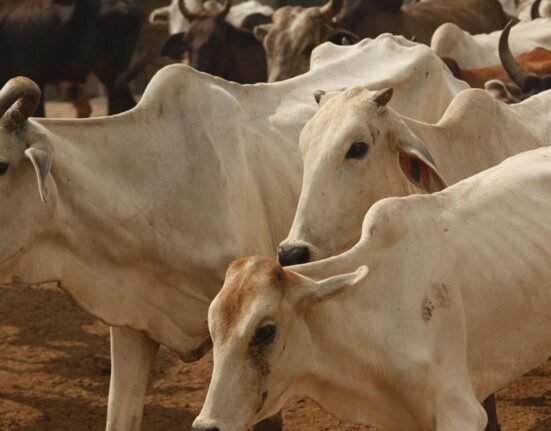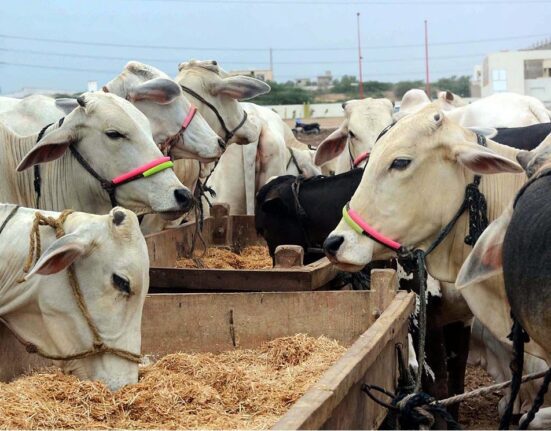India’s dairy industry, bolstered by decades of public-sector investment and international partnerships, is the largest in the world. In 1965, the National Dairy Development Board (NDDB) was established to transform dairying into an instrument for the development of India’s rural sector.
Farmer cooperatives sprang up around the country, collecting and processing milk and other dairy products for sale in villages and cities. This movement, known as the “White Revolution,” significantly increased the incomes of 80 million Indian farmers and expanded access to essential nutrients like protein, minerals, and vitamins.
Despite its status as the world’s leading milk producer, India’s dairy sector faces significant challenges. The productivity of Indian dairy cattle and buffalo is relatively low. In 2014, India had 50 million dairy cows and 40 million water buffalo, producing a total of 140 million tons of milk.
However, dairy cattle produced an average of only 14,000 hectograms of milk per animal, while buffalo produced 19,000 hectograms per animal. In contrast, the U.S. had just 9.2 million dairy cows but produced more than 93 million tons of milk, averaging 101,000 hectograms per animal.
Methane emissions: A growing Cconcern
A major issue in India’s dairy sector is the high methane emissions from milk production. The FAO’s review of dairy production’s climate impacts in South Asia revealed that the region is responsible for 23 per cent of global methane emissions from dairy production. Poor feed quality is the primary cause of these emissions. Most milk production in India occurs on small-scale, mixed farms where poor-quality feed is prevalent. This feed is difficult for animals to digest, leading to increased methane production during digestion.
Moving towards sustainable milk production
Sustainable dairy farming in India emphasizes the prudent and efficient use of resources to avoid over-exploitation. Effective management of the farming system is crucial for ensuring the agricultural sector’s economic, environmental, and social sustainability.
The Indian government supports various initiatives to promote sustainable practices, focusing on cattle health, dairy farm hygiene, proper management of cattle feed and fodder, and effective farm waste management. Key practices include selecting appropriate bovine breeds, implementing herd disease management, using certified chemicals and veterinary medicines, ensuring hygienic milking conditions, and maintaining proper feed and water quality. These measures ensure the well-being of the animals and the quality and safety of milk production.
India has initiated several projects to use cow dung for biogas production, incentivizing farmers for proper waste management. In Chhattisgarh, the Godhan Nyay Yojana allows the government to purchase cow dung from farmers, which is then processed in biogas plants to generate electricity.
This initiative not only provides an additional income stream for farmers but also promotes green energy and organic farming practices. Similarly, in Indore, the Gobardhan project uses cow dung to produce methane gas for power generation, supporting sustainable energy solutions while benefiting local farmers economically
Biogas offers a sustainable solution for dairy farms by converting waste into energy. Utilising carbon credits, dairy farms can fund biogas projects, reducing greenhouse gas emissions and creating renewable energy. This not only supports environmental sustainability but also provides an economic incentive for farmers through the sale of carbon credits, making biogas a viable option for promoting green practices in the dairy industry. By leveraging carbon markets, the transition to biogas systems can be accelerated, contributing to a cleaner, more sustainable future for dairy farming in India.
Dr. Anjumoni Mech from the Indian Council of Agricultural Research’s National Institute of Animal Nutrition and Physiology in Karnataka, India, explained, “The small dairy farms that dominate India’s dairy sector—73 million, in fact—have only two dairy cows on average but contribute 72 per cent of India’s milk production. Understanding their unique impact on the environment and how it could be potentially lowered is crucial as we all work toward shared sustainability goals.”
Future directions
The most effective interventions for reducing the carbon footprint in smallholder dairy farms include precision feeding technology that can significantly enhance sustainability in India’s dairy farming by optimising feed utilisation, reducing waste, and minimizing methane emissions.
By accurately tailoring feed to the nutritional needs of each cow, farmers can improve animal health and productivity while lowering environmental impact. This approach ensures efficient resource use, contributing to the overall sustainability of the dairy sector. Companies like eFeed is helping dairy farmers achieve these goals by helping with precision animal nutrition, thereby promoting sustainable practices and unlocking carbon credits for further economic benefits.
India’s dairy sector has the potential to lead the world in sustainable dairy production by improving productivity, reducing methane emissions, and adopting sustainable practices. With continued investment and innovation, India can achieve a Green Revolution in dairy farming, ensuring food security, reducing poverty, and mitigating climate impacts.
Source: Hindu Businessline







